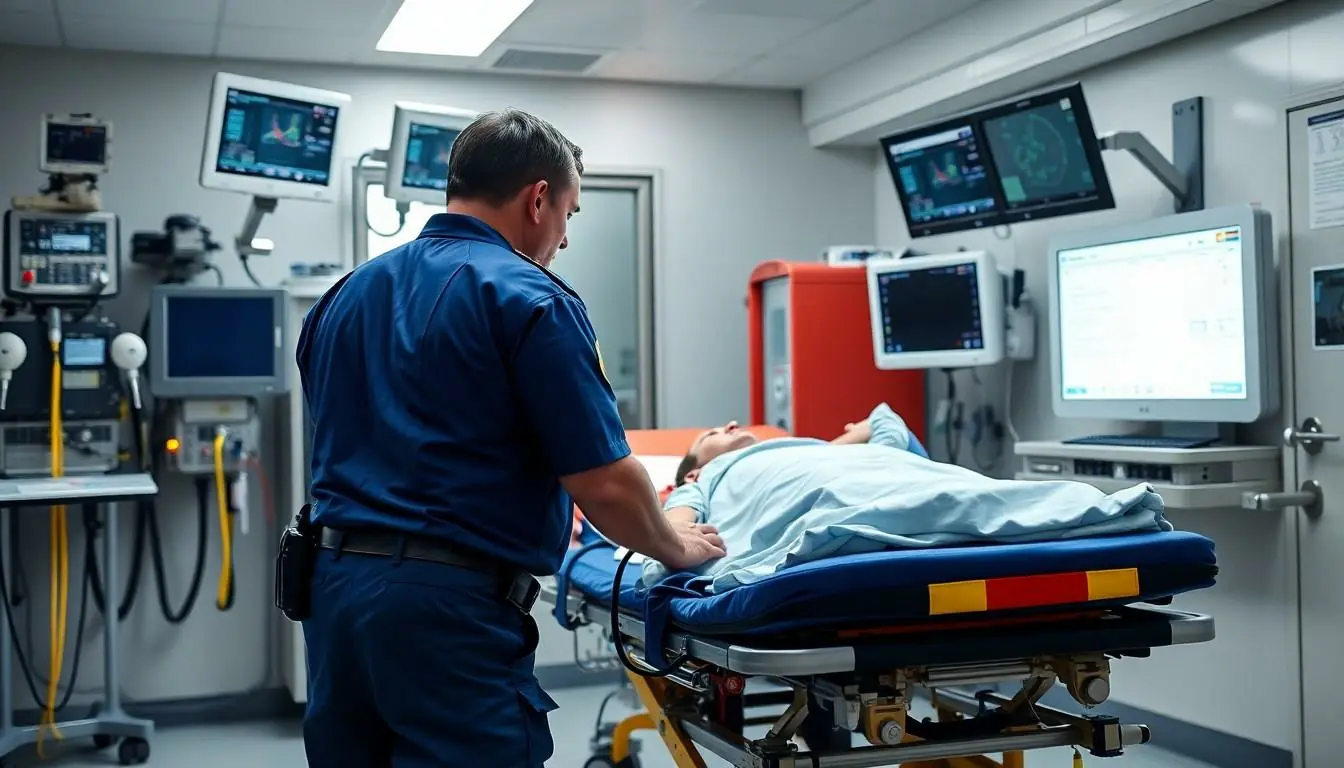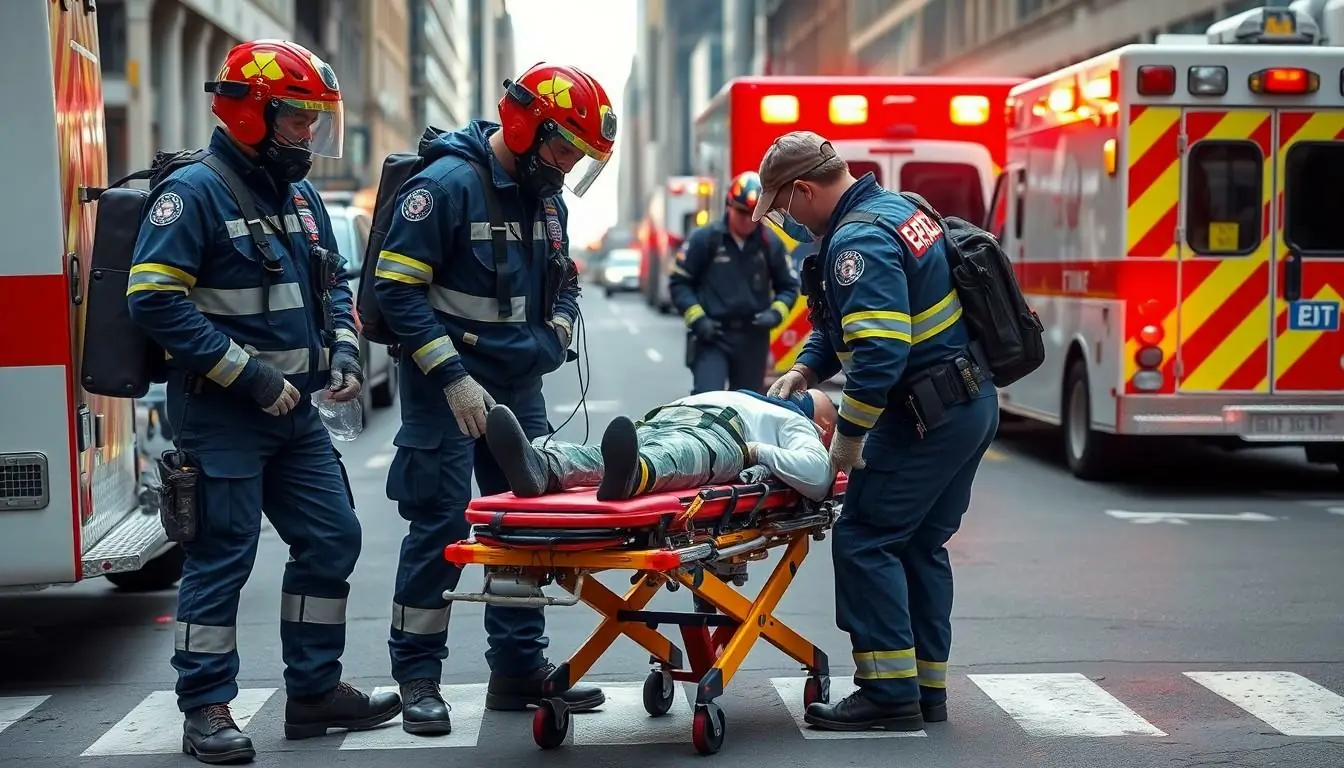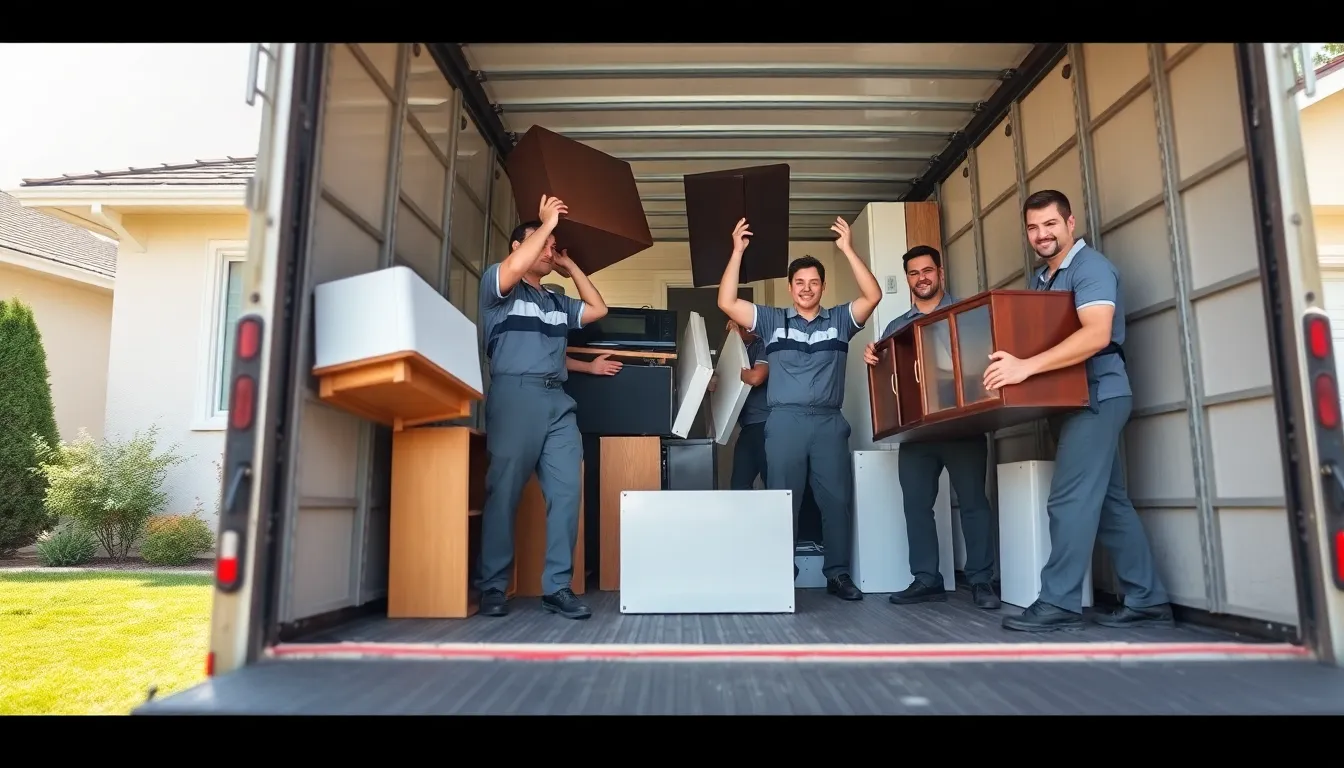Life’s unpredictable moments can turn a routine day into a medical emergency in the blink of an eye. Whether it’s a sudden injury at home or a medical crisis at work knowing how to respond effectively could mean the difference between life and death.
Emergency care isn’t just about calling 911 and waiting for help to arrive. It’s about being prepared with the knowledge and skills to take immediate action when someone needs assistance. From basic first aid techniques to understanding when professional medical help is necessary these critical skills can empower anyone to become a potential lifesaver in their community.
Table of Contents
ToggleUnderstanding Emergency Medical Care
Emergency medical care encompasses time-sensitive interventions designed to stabilize patients experiencing acute health crises. Critical decisions made during the initial response phase directly impact patient outcomes.
Types of Medical Emergencies
Medical emergencies fall into distinct categories based on their nature:
Cardiovascular Emergencies
- Heart attacks marked by chest pain radiating to arms
- Cardiac arrest requiring immediate CPR
- Stroke symptoms including facial drooping speech difficulty
Respiratory Emergencies
- Choking incidents blocking airways
- Severe asthma attacks with labored breathing
- Anaphylactic reactions causing throat swelling
Trauma Emergencies
- Head injuries from falls or impacts
- Deep lacerations causing significant blood loss
- Fractures requiring immobilization
Environmental Emergencies
- Heat exhaustion in temperatures above 90°F
- Hypothermia in cold exposure below 35°C
- Drowning incidents requiring rescue breathing
The Golden Hour Principle
The Golden Hour represents the critical 60-minute period following a traumatic injury or medical emergency. Patient survival rates increase by 70% when definitive care starts within this window. Emergency response teams prioritize rapid assessment transport treatment during this period.
| Time Frame | Survival Rate |
|---|---|
| 0-30 minutes | 85-90% |
| 31-60 minutes | 70-75% |
| Beyond 60 minutes | Below 50% |
- Airway maintenance oxygen administration
- Bleeding control wound management
- IV fluid resuscitation
- Vital sign stabilization monitoring
- Transport to appropriate medical facility
Initial Assessment and Triage

Initial assessment in emergency care follows a systematic approach to evaluate patients quickly and determine treatment priorities. This organized method ensures critical conditions receive immediate attention while maximizing available resources.
Primary Survey (ABC Protocol)
The ABC protocol prioritizes three essential life-sustaining functions: Airway, Breathing, and Circulation. Emergency responders check the airway for obstructions or restrictions, ensuring a clear path for oxygen. Breathing assessment focuses on chest movement, breath sounds, and respiratory rate, identifying signs of respiratory distress. Circulation evaluation includes pulse checks, blood pressure monitoring, and assessment of skin color, temperature, and bleeding control. This systematic approach takes 30-60 seconds to complete and identifies immediate life threats.
Secondary Assessment Methods
Secondary assessment involves a comprehensive head-to-toe examination after stabilizing critical functions. Responders gather vital signs including temperature, pulse rate, blood pressure, and oxygen saturation levels. Medical history collection covers current medications, allergies, past surgeries, and recent symptoms. Physical examination includes checking pupils, listening to heart sounds, palpating the abdomen, and assessing neurological status. Documentation of findings creates a baseline for monitoring patient progress and communicating with healthcare providers.
| Vital Sign | Normal Adult Range |
|---|---|
| Heart Rate | 60-100 beats/min |
| Blood Pressure | 90/60-120/80 mmHg |
| Respiratory Rate | 12-20 breaths/min |
| Temperature | 97.8-99.1°F |
| Oxygen Saturation | 95-100% |
Life-Saving Interventions
Life-saving interventions form the cornerstone of emergency medical care, encompassing techniques designed to maintain vital organ function during critical situations. These interventions range from basic life support measures to advanced cardiac procedures.
Basic Life Support Techniques
Basic life support focuses on maintaining airway, breathing and circulation without specialized equipment. The CAB sequence (Compressions, Airway, Breathing) starts with 30 chest compressions at a rate of 100-120 per minute for adults. For airway management, rescuers tilt the head back to open the airway, then deliver 2 rescue breaths lasting 1 second each. The compression depth reaches 2-2.4 inches for adults, 2 inches for children and 1.5 inches for infants. Recovery position prevents airway obstruction in unconscious patients who breathe normally. For choking victims, 5 back blows alternated with 5 abdominal thrusts clear airway obstructions.
Advanced Cardiac Life Support
Advanced cardiac life support incorporates medication administration, cardiac monitoring and advanced airway management. The protocols include early defibrillation within 3-5 minutes of cardiac arrest using automated external defibrillators. Medications like epinephrine (1mg every 3-5 minutes) and amiodarone (300mg bolus) treat specific cardiac rhythms. Advanced airways such as endotracheal tubes or supraglottic devices secure the airway. Continuous cardiac monitoring identifies rhythms like ventricular fibrillation, pulseless ventricular tachycardia, asystole or pulseless electrical activity. Post-cardiac arrest care focuses on maintaining blood pressure, oxygenation and temperature control to optimize neurological recovery.
| Intervention Type | Time Window | Success Rate |
|---|---|---|
| Basic CPR | 0-4 minutes | 70% |
| Defibrillation | 3-5 minutes | 60% |
| Advanced Airways | 5-8 minutes | 50% |
| Drug Administration | 8-10 minutes | 40% |
Trauma Care Management
Trauma care management focuses on immediate interventions for patients with severe physical injuries. The systematic approach to trauma care prioritizes stabilizing life-threatening conditions while preventing further injury.
Bleeding Control and Wound Care
Effective bleeding control starts with direct pressure application using sterile gauze or clean cloth on the wound site. For arterial bleeding, applying pressure to pressure points along major arteries stops blood flow to the affected area. Tourniquets become essential for severe limb injuries when direct pressure proves ineffective, placed 2-3 inches above the wound. Clean wounds require irrigation with sterile saline solution to remove debris, followed by appropriate dressing application. Deep wounds measuring more than 1/4 inch or containing embedded objects require immediate medical attention.
Fracture and Spinal Injury Handling
Fracture management begins with immobilization using splints or available rigid materials to prevent further injury. Suspected spinal injuries demand complete immobilization of the head, neck and back in the position found. A rigid cervical collar stabilizes potential neck injuries, while log rolling maintains spinal alignment during patient movement. Open fractures require sterile dressing without repositioning the bone. Signs of fractures include deformity, swelling, bruising and loss of function in the affected area. Proper immobilization reduces pain and prevents additional tissue damage or nerve injury.
Medical Equipment and Supplies
Effective emergency care relies on immediate access to proper medical equipment and supplies. The right tools enable responders to deliver timely interventions during critical situations.
Essential Emergency Care Tools
A well-stocked emergency kit contains specific items for basic life support and first aid. The kit includes sterile gauze pads, adhesive tape, bandages in various sizes, scissors, tweezers, antibiotic ointment, nitrile gloves, an emergency blanket, a CPR mask, trauma shears, wound cleansing solutions, burn dressings, triangular bandages for slings, disposable instant cold packs, elastic wraps, hydrocortisone cream, antiseptic wipes, eye wash solution, oral rehydration salts, a flashlight with extra batteries, safety pins, a first aid manual, a notepad, and medical tape. These items support immediate care for wounds, burns, sprains, fractures, and other common emergencies.
Portable Life Support Devices
Modern emergency care incorporates compact medical devices that enhance patient survival rates. Automated External Defibrillators (AEDs) restore normal heart rhythm during cardiac arrest with a 90% success rate when used within 1 minute. Portable oxygen concentrators deliver supplemental oxygen at flow rates up to 6 liters per minute. Pulse oximeters monitor blood oxygen levels with 2% accuracy. Blood pressure monitors track vital signs at 30-second intervals. Glucose meters provide blood sugar readings in 5 seconds. Bag valve masks support manual ventilation at 12-20 breaths per minute. These devices integrate with emergency medical services protocols to optimize patient outcomes during transport to definitive care.
| Device | Response Time | Success Rate |
|---|---|---|
| AED | Within 1 minute | 90% |
| Glucose Meter | 5 seconds | 99% accuracy |
| Pulse Oximeter | Continuous | 98% accuracy |
| BP Monitor | 30 seconds | 95% accuracy |
Emergency Transportation
Emergency transportation forms a critical link in the chain of survival for critically ill or injured patients. Swift movement of patients while maintaining high-quality care significantly impacts survival outcomes.
Ambulance Services
Modern ambulances function as mobile emergency rooms equipped with advanced life support equipment. Basic Life Support (BLS) ambulances carry essential medical supplies oxygen delivery systems. Advanced Life Support (ALS) ambulances include cardiac monitors defibrillators medication administration systems intubation equipment. Ground ambulances reach speeds of 60-80 mph in emergency conditions transporting patients within 8-12 minutes in urban areas. Air ambulance services cover distances of 150-200 miles providing critical care during transport at speeds of 150-175 mph.
Patient Transfer Protocols
Patient transfers follow standardized protocols to ensure seamless care coordination between medical facilities. Emergency Medical Services (EMS) teams conduct rapid patient assessments documenting vital signs injuries medical history on standardized forms. Medical facilities receive advance notifications through radio communications allowing preparation of specialized care teams equipment. Transfer documentation includes patient identifiers current medications allergies treatment administered during transport. Direct communication between sending receiving medical teams ensures continuity of care proper resource allocation based on patient acuity levels.
Professional Emergency Response Teams
Professional emergency response teams provide specialized medical care during critical situations. These highly trained teams operate within established protocols to deliver rapid assessment treatment to patients in life-threatening conditions.
Roles and Responsibilities
Emergency response teams consist of Emergency Medical Technicians (EMTs) Basic Advanced Paramedics Critical Care Nurses Emergency Physicians. EMTs perform basic life support including CPR wound care patient stabilization. Paramedics deliver advanced interventions such as intubation medication administration cardiac monitoring. Emergency physicians direct overall patient care make critical treatment decisions establish transfer protocols. Critical care nurses monitor vital signs administer medications assist with advanced procedures document patient care.
| Team Member | Primary Responsibilities | Certification Level |
|---|---|---|
| EMT-Basic | CPR wound care stabilization | 120-150 hours |
| Paramedic | Advanced interventions medications | 1,200-1,800 hours |
| Emergency Physician | Treatment decisions protocols | 11-12 years |
| Critical Care Nurse | Patient monitoring documentation | 4-6 years |
Communication and Coordination
Emergency teams utilize standardized communication protocols to ensure clear accurate information transfer. Radio systems connect field teams with hospital emergency departments enabling real-time medical direction. Teams employ the SBAR method (Situation Background Assessment Recommendation) for patient handoffs between providers. Digital documentation systems track patient care interventions vital signs transport details. Regional coordination centers manage resource allocation dispatch appropriate units based on incident severity location. Mutual aid agreements enable cross-jurisdictional response during large-scale emergencies mass casualty incidents.
Conclusion
Emergency care demands swift action knowledge and proper preparation to save lives during critical moments. Having essential skills and understanding crucial protocols like the ABC assessment and Golden Hour principle can significantly impact patient outcomes. A well-equipped emergency kit combined with proper training in basic life support techniques creates a solid foundation for effective emergency response.
The coordinated efforts of professional emergency teams supported by modern medical equipment and standardized protocols ensure optimal care delivery. Everyone can play a vital role in emergency situations by staying prepared and knowing when to seek professional help. This comprehensive approach to emergency care continues to evolve making communities safer and better equipped to handle medical emergencies.



